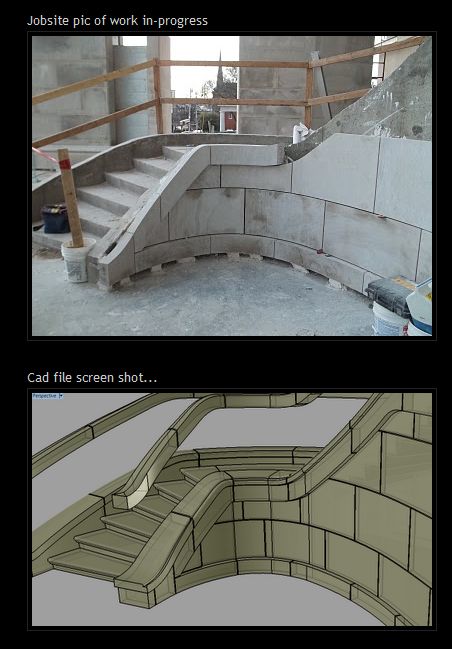2D curve wrap to surface cylinder-best method?
-
ps: about Rhino I'm a Windows User.
check out http://www.moi3d.com
About $200.00. Free 30 day trial. Coded by the same guy that originally coded rhino, has a simple elegant interface, and a fantastic clean sketchup export.
cheers
rabbit -
This has just been posted on the rhino forum recently (see screen shot)
Also, this site if you are into stairs:
cheers
rabbit

-
WOW this is one of my favorite threads in a long time.
Great info here on stairs thanks for the great tuts Jeff and all others who have made usefully posts.
Loving the stair porn link too.
I have built a few steel spiral and curving stair cases over the years and have also built railings that go on top of beautiful curving stringers with a wood top rail on the railing. My question is would you build the stringers in this thread in the shop or on site? Basically I am asking if anyone has a link or pics of these being built. Also any one have any 2D shop drawings of stringers like these that they would be willing to share?
Cheers
S
Advertisement








